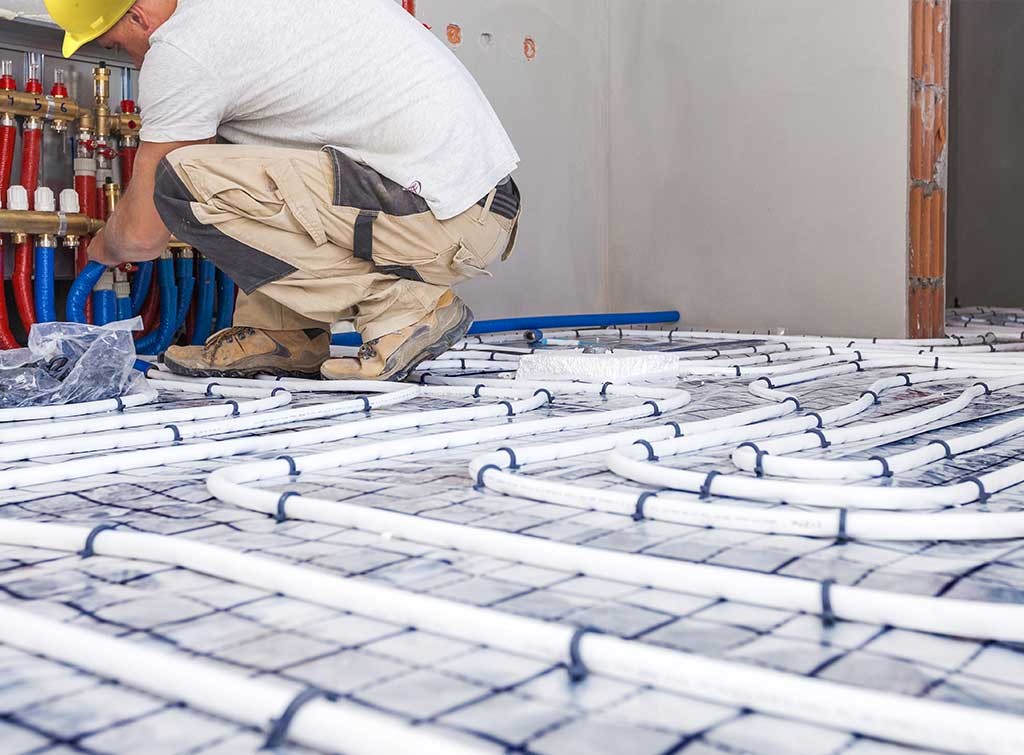When it comes to keeping your home warm and comfortable, choosing the right heating system is essential. Two popular options that often come up in discussions are underfloor heating and radiators. While both serve the purpose of heating your home, they differ in terms of installation, energy efficiency, comfort, and aesthetics. In this article, we will compare underfloor heating and radiators to help you make an informed decision for your home.
Installation
Underfloor heating involves the installation of a network of pipes or electric heating elements beneath the floor. This can be done during construction or as a retrofit solution. On the other hand, radiators are standalone heating units that are mounted on the walls. Installing radiators generally requires less effort and can be easily added to an existing heating system.
Energy Efficiency
When it comes to energy efficiency, underfloor heating has an advantage. By heating the entire floor, the heat is evenly distributed throughout the room, resulting in reduced heat loss and lower energy consumption. Radiators, on the other hand, tend to create temperature variations in a room, with warmer air near the radiator and cooler air in other parts. This temperature stratification can lead to wastage of energy as the heat rises to the ceiling, requiring higher energy consumption to maintain a comfortable temperature.
Comfort
Underfloor heating provides a more comfortable heating experience compared to radiators. With underfloor heating, the heat radiates evenly from the floor, creating a warm and cozy environment. It also eliminates cold spots and reduces drafts, making it particularly pleasant during the colder months. Radiators, while effective at heating a room, can create localized hotspots and leave other areas feeling cooler. Additionally, radiators tend to generate convection currents that can circulate dust particles and allergens in the air.
Aesthetics
When it comes to aesthetics, underfloor heating offers a significant advantage. Since the heating elements are hidden beneath the floor, there are no visible radiators or pipes to disrupt the design and layout of your rooms. This allows for greater freedom in interior design, giving you the flexibility to arrange furniture and decorate your space without any heating obstacles. Radiators, on the other hand, can be bulky and take up wall space, limiting your options for furniture placement and potentially clashing with your overall interior design.
Maintenance and Repairs
Radiators are relatively simple devices and require minimal maintenance. They may need occasional bleeding to remove air bubbles and ensure optimal performance. In contrast, underfloor heating systems are hidden beneath the floor, making them more difficult to access for maintenance or repairs. If any issues arise with underfloor heating, it can be more time-consuming and costly to fix.
Cost Considerations
Underfloor heating systems generally have higher upfront costs compared to radiators. The installation of underfloor heating involves more labor and materials, especially if it’s a retrofit project. However, underfloor heating tends to have lower running costs due to its energy efficiency, which can result in long-term savings on heating bills. Radiators, while cheaper to install, may be less energy-efficient and could lead to higher energy bills over time.
Conclusion
Both underfloor heating and radiators have their advantages and considerations. Underfloor heating offers superior energy efficiency, enhanced comfort, and greater design freedom. It is an excellent choice for new constructions or major renovations where the cost can be justified. On the other hand, radiators are a more affordable and easily installed option, suitable for those who prioritize convenience and have a limited budget.
Ultimately, the choice between underfloor heating and radiators depends on your specific needs, budget, and preferences. It is recommended to consult with a heating professional or an architect to evaluate your home’s layout, heating requirements, and budgetary constraints before making a decision.

